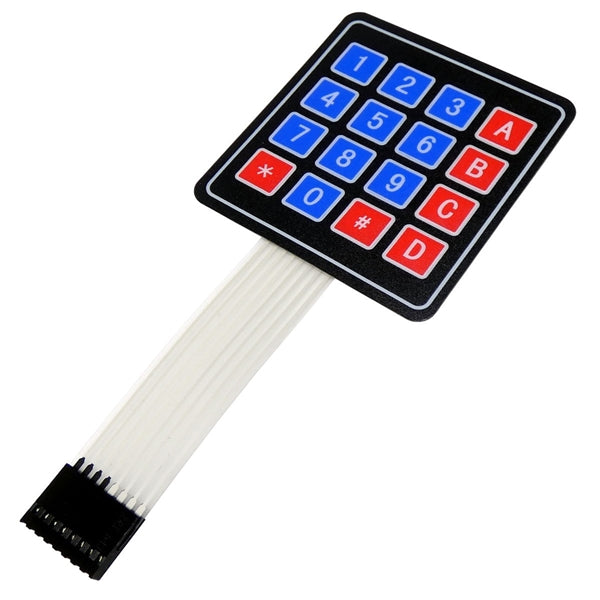The Role of Membrane Switches in Enhancing Device Functionality
The Role of Membrane Switches in Enhancing Device Functionality
Blog Article
Comprehending Membrane Switches Over: The Key to Sturdy and Trustworthy Controls

What Are Membrane Buttons?
Membrane layer buttons are a sophisticated service in the realm of interface innovation, combining capability and design seamlessly. These gadgets act as a user interface in between users and electronic systems, incorporating a number of elements into a small format. Usually constructed from flexible, thin layers of materials, membrane switches are designed to reply to touch, allowing individuals to engage with machinery and digital tools effectively.
The primary components of a membrane layer button include a printed circuit layer, visuals overlay, and a spacer layer that prevents unexpected activation. The graphic overlay can be personalized to mirror brand name identity or user choices, boosting aesthetics while ensuring functionality. Membrane buttons are commonly made use of in numerous applications, including clinical devices, customer electronic devices, and commercial tools, owing to their durability and resistance to ecological factors such as dampness and dirt.
One of the vital benefits of membrane buttons is their capacity to stand up to damage, making them optimal for high-traffic atmospheres. Furthermore, they are light-weight and require minimal room, allowing for innovative layouts in product advancement. Generally, membrane layer changes represent a effective and functional selection for contemporary digital user interfaces, weding innovation with user-centric layout principles.
Just How Membrane Changes Work
The procedure of membrane layer changes joints on an easy yet reliable mechanism that translates user input into electronic signals. When a customer presses the switch, the leading layer flaws, permitting a conductive element in the circuit layer to make contact with an equivalent conductive pad on the bottom of the graphic overlay.
The design of membrane switches can vary, but they frequently incorporate domes or responsive elements to offer feedback to the customer, boosting the overall experience - membrane switch. The materials made use of in membrane layer buttons, such as polyester or polycarbonate, add to their durability and resistance to environmental aspects, consisting of dampness and dirt. Moreover, the published circuits are generally enveloped, which protects them from wear and tear in time.
Advantages of Membrane Layer Switches

Furthermore, membrane switches are understood for their sturdiness. Built from robust materials, they are immune to dust, wetness, and physical wear, which substantially extends their life expectancy contrasted to conventional mechanical switches. This longevity makes them especially suitable for high-traffic settings and applications requiring longevity.
One more significant advantage is the ease of cleaning and upkeep. The smooth surface area of membrane changes lessens dirt buildup and is often invulnerable to spills, making them perfect for settings that call for regular sanitization.
Furthermore, membrane buttons provide a structured profile, leading to a thinner layout that can be incorporated into different tools without adding bulk. This attribute not only enhances the visual charm however also contributes to a more ergonomic item style.
Applications of Membrane Switches
User-friendly and functional, membrane layer buttons discover applications across a broad range of industries, including clinical gadgets, customer electronics, and commercial tools. In the medical area, these switches are important to tools such as analysis tools, person monitoring systems, click reference and mixture pumps, where dependability and convenience of cleaning are vital. Their capacity to maintain and hold up against rough environments functionality makes them excellent for such applications.

In consumer electronics, membrane layer switches are made use of in items like microwaves, washing makers, and remote controls - membrane switch. Their smooth layout enables instinctive customer interfaces, boosting the general individual experience while supplying durability and resistance to tear and use
Commercial devices additionally profits from membrane layer switches, particularly read the article in control panels for equipment and automation systems. These switches offer security versus dirt and wetness, making certain regular performance in difficult atmospheres. Their adjustable features permit makers to customize them to details functional demands, improving effectiveness and performance.
Choosing the Right Membrane Layer Change
When selecting a membrane button, it is important to consider different variables that influence performance and suitability for particular applications. The primary factors to consider include environmental problems, tactile comments, sturdiness, and layout specs.
First, analyze the operating atmosphere; buttons exposed to moisture, chemicals, or severe temperature levels call for particular products to guarantee longevity and capability. Next off, evaluate the need for tactile responses. Relying on customer interaction, some applications may take advantage of a responsive feedback to confirm activation, while others might like a non-tactile design for visual factors.
Sturdiness is one more critical factor; membrane layer switches ought to be designed to stand up to constant usage, influences, and abrasion. Ensure the picked switch can withstand the expected lifecycle, especially in high-usage scenarios.

Final Thought
In conclusion, membrane changes serve as crucial elements in the layout of trusted and sturdy control systems across numerous sectors. Their small design, combined with robust construction and personalized attributes, boosts user interaction while making sure long life in requiring settings. The adaptability of membrane switches over enables tailored services that satisfy certain functional needs, reinforcing their value in modern technology. As markets remain to evolve, the value of incorporating efficient membrane button services can not be overemphasized.
Membrane layer changes represent an essential element of contemporary interface style, blending capability with strength in various applications.Membrane layer switches are an innovative solution in the realm of customer interface modern technology, incorporating performance and design perfectly. Normally constructed from flexible, thin layers of materials, membrane Get the facts switches are made to react to touch, making it possible for individuals to communicate with machinery and digital devices properly.
The layout of membrane layer switches can vary, however they usually include domes or tactile components to provide comments to the user, improving the general experience.In conclusion, membrane layer changes offer as important elements in the style of reputable and long lasting control systems throughout numerous industries.
Report this page